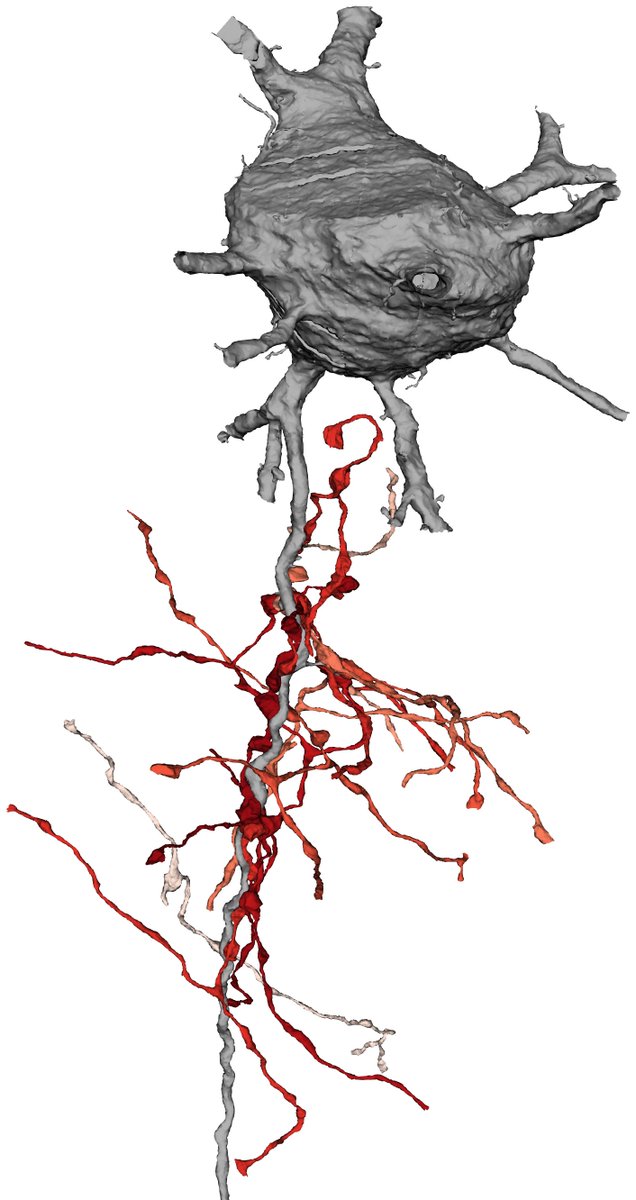Different cell types in the brain have their own connectivity rules and patterns. In a recently published study, our #neuroscience researchers took a deep dive into the connectomics of an important but enigmatic cell type, the chandelier cell. 🧵1
📄 elifesciences.org/articles/73783
📄 elifesciences.org/articles/73783
🔬 💻 Using large-scale #electronmicroscopy with automated segmentation, we mapped the complete axo-axonic input onto pyramidal neurons (1,929 synapses in total, 1,127 from chandelier cells) in a volume of layer 2/3 of mouse visual cortex. #ImagingTheFuture #BrainMapping🧵2 

By completely reconstructing the presynaptic chandelier cells, we found a novel principle of connectivity, where a group of interneurons are essentially interchangeable, but their postsynaptic targets individually regulate the amount of input they receive from the population. 🧵3 

Meanwhile, @junzhuang3 devised a way to measure the activity of chandelier cells during behavior while @anirban6908 and @BrainiacCostas brought together both structural and functional data to model the impact of chandelier cells on the neurons they target. 🧵4 

Beyond the specific discoveries regarding the structure and function of chandelier cells, this work will serve as a framework for how cell-type specific connectivity will be studied with modern methods of anatomy, genetics and modeling. 🧵5
The EM dataset, proofread segmentations, and synaptic connectivity used for this study is fully open and available at microns-explorer.org. #openscience 🧵6
Our EM reconstruction relied heavily on #machinelearning from the @SebastianSeung lab and was produced as part of the @IARPAnews MICrONs program with @AToliasLab. The EM data is fully open and available to browse and download at microns-explorer.org. #openscience 🧵7 

• • •
Missing some Tweet in this thread? You can try to
force a refresh











